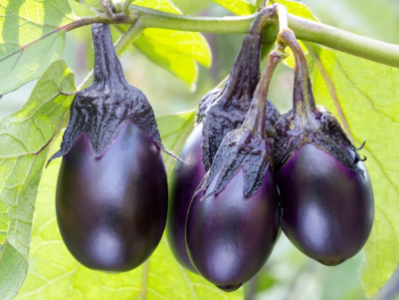How to cook eggplant for picky eaters
When I decided to make a shift toward eating a healthier, more natural diet, cooking wasn’t the hard part.
The hard part was finding veggie recipes that my husband actually liked! I cook almost every night for Jake and I didn’t want to force him into a diet he didn’t like. Food is meant to be enjoyed!
I’ve heard that kids need to try a food ten times before they’ll develop a taste for it. I took a step back and to the left with this idea, and decided I’d get him to try a food three times, prepared in three different ways, before letting him say he doesn’t like it.
Why do some people hate eggplants?
Oftentimes it’s the texture or preparation of veggies that is more off-putting than the flavor.
I asked my husband and he quickly gave me three solid reason why he didn’t like eggplant. The skin is tough, the inside is slimy, and it can have a bitter taste.
I've spent time looking through forums about eggplant and it turns out these three complaints were repeated quite often.
The tough skin.
This was my husband’s biggest issue with eggplant. The tough skin and the soft meat together in one bite is the most unpleasant for him. Once you figure out the problem it becomes so much easier to deal with.
Solution - peel that sucker!
It’s true, a lot of the nutritional value in most veggies is contained in the skin and the meat just underneath. But eating some veggie is definitely better than no veggie! In my house, the skin is the difference between a clean plate and a pile of leftover cooked eggplant.
Skip the grocery store varieties!
Those big, deep purple eggplants at the grocery store were not bred for flavor, nutrition, or texture. They were bred to withstand the long and bouncy ride in a semi truck from farm to store! The kind of eggplant you'll find at a farmer's market or neighbors garden are the ones bred for superior flavor and texture. If you've written off eggplant because of the tough texture and bitter flavor of grocery store eggplant, try a different kind! It's like night and day!
The slimy inside.
This is the most common complaint for kids. I personally like this texture and would describe it as creamy instead of slimy. Each person’s tastes are different.
There is a very thin line between cooked and overcooked when it comes to eggplant. This is especially true when you’re cooking in the oven and can’t see the progress.
If sliminess is a challenge in your house try this:
- Cut into pieces 1 inch wide or smaller.
- Cook them hot & fast! Get your pan sizzling and fry the eggplant about 30 seconds on each side. The outside will get crispy while the inside is lightly cooked.
- Go easy on the oil. Eggplants absorb liquid like crazy! Too much oil, butter, etc can contribute to a slimy texture. Keep the inside dry and fluffy by keeping oil to a minimum.
The bitter taste.
This issue is most easily addressed by using a salt preparation or just choosing a different type of eggplant.
Salt preparation
Cut your eggplant into the size and shape called for in your recipe. Generously coat the pieces with salt and let them sit for 5-10 minutes. You’ll see a light brown juice coating the eggplant after a few minutes. Blot the pieces dry with a paper towel. Turn them over and coat the other side in salt and let sit. Rinse the eggplant pieces and dry them off before cooking. This process will leach out any bitter juices inside the eggplant.
Skip the grocery store varieties!!
There are dozens of different kinds of eggplant. The large purple ones from the grocery store will last the longest and are least likely to get damaged during transport. That’s why they’re so common, but they’re certainly not the only kind of eggplant! In general, the smaller eggplants are sweeter and less likely to be bitter.






